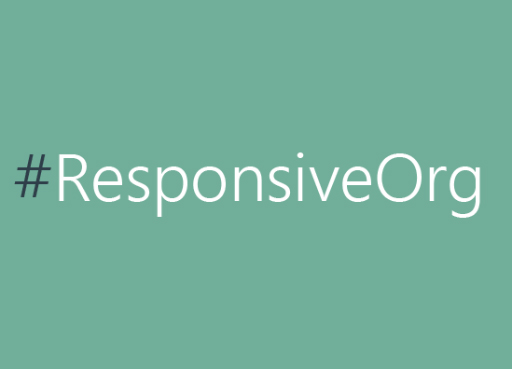Is your organisation responsive?

 Saturday 10th May 2014 saw the first event for the Responsive Organisation – an ‘Unconference’, which was a new experience for me and a wonderfully liberating way to be involved in a day based around a topic, but without an agenda. Around 150 delegates chose to give up their valuable time on a Saturday because they shared a mutual belief that there is a more powerful and inclusive way to run a 21st century organisation than to follow the traditional ‘industrial’ pyramid leadership model.
Saturday 10th May 2014 saw the first event for the Responsive Organisation – an ‘Unconference’, which was a new experience for me and a wonderfully liberating way to be involved in a day based around a topic, but without an agenda. Around 150 delegates chose to give up their valuable time on a Saturday because they shared a mutual belief that there is a more powerful and inclusive way to run a 21st century organisation than to follow the traditional ‘industrial’ pyramid leadership model.
A shift is required for this to happen and the aim of the Responsive Organisation is to create a movement that will mobilise and support that shift:
“Previous organizational strategies were designed for job functions that were mostly routine and static. Hierarchical systems of command and control allowed senior leadership to drive efficiency and predictability but at the expense of adaptability, free information flow, and rapid response. Leading companies are now restructuring for greater adaptability and iteration speed.”
The organisation believes that a company’s ability to learn and respond rapidly to new information is at the heart of this shift, and that is now much easier with the advancement of technologies like social enterprise networks. The key to these technologies is the free flow of information right across a company, giving employees a genuine opportunity to be heard while also receiving up to date company news and information.
In a responsive organisation every employee not only knows what is going on, but also gets a real feel for the company spirit and purpose. They understand better how their input has an impact on the whole output, and the difference it makes to customers. They also know that they are valued and their input is appreciated.
And why not?
Doesn’t it make sense that the collective knowledge of a whole workforce could just be of significant value to a leadership team that works, watches and controls from the safety of their ivory tower?
This is not a new agenda. Organisations like the nowhere creative consultancy have been advocating new patterns of leadership for a few years. The difference is that where nowhere engage with leaders, the Responsive Organisation is encouraging a broader approach; they are creating a movement that believes in a new, more inclusive model of leadership across the whole business sector. I can see two advantages in taking this approach:
- If the movement can reach a tipping point where a significant number of employees are in agreement, the present leaders will have no choice but to take notice – or move on
- This approach will inform, influence and inspire the leaders of tomorrow, so even if the change is slow – it will happen
Engagement in the the responsive movement is growing and many of Saturdays attendees introduced insights and concepts that quickly filled the ’empty’ agenda. Fascinating discussions followed and the energy in the room was incredibly positive.
As might be expected the day evoked more questions than it did answers, and it was a day of ideas rather than actions. For the Responsive Organisations manifesto to have a real impact and initiate change, the movement has to get the word out far beyond Saturday’s audience of like-minded people who already ‘get it’.
This is an important issue, as highlighted by Forbes Scott Allison in this article. I believe that the change is happening – slowly – and it is up to those of us who believe in these new patterns of leadership to play our part.
Every company has an essence or true purpose that needs to be understood by the whole organisation if they are going to survive and grow in the 21st Century. We just need to persuade leaders to let go of some of the control, tap into the collective knowledge and expertise from across the whole company and be more responsive.
If you are interested in this agenda and based in the UK there is another event in London on 27th April 2015 with speakers, workshops and an unconference – sponsored by Microsoft

Leave a Reply